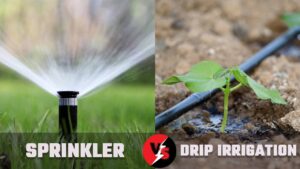
If you want to learn how to create your own diy irrigation systems to improve the irrigation of your pot plants or crops, look no further.
If you’re a plant lover seeking for a quick, easy, and efficient way to water each of your pots, I’ve put up a list of several home irrigation systems with easy-to-find components.
What is an Irrigation System?
Having a garden or caring for a large number of plants takes a significant amount of time, which not everyone has.
With an irrigation system, you may simplify the task and increase the efficiency of water use and distribution. In the production of fruits and vegetables nowadays, local and large-scale irrigation systems are used.
In this post, we’ll look at small-scale irrigation systems that you may use to water your garden or pots.
How to Make DIY Irrigation Systems
Learn how to create economical, effective, and simple irrigation systems for your garden and all of your plants in the sections below.
Home Drip

This is a fantastic home watering system for potted plants that allows you to leave your house for a few days and not worry about your plants running out of water. This home drip irrigation system allows you to supplement the water with nutrients if the plants require it.
Materials:
- Bottles with caps made of plastic.
- Object with a tiny point, such as a pin.
Process:
- Fill a bottle halfway with water and set it aside. The 600ml bottles are the best.
- Using a heated pin, pierce the plug. The bottles will empty at a faster or slower rate depending on the size of the hole.
- Hang the bottle from your plants at a set height. Keep them away from the ground, as the lid’s hole may become clogged.
Evaporation – Condensation
Water evaporation and condensation power this system. A “solar drip” system is what it’s called.
Materials and procedure:
- Water in a small container or the bottom of a bottle.
- A cover or greenhouse made from a bottle or carafe with a diameter larger than the little container.
- Place the containers on top of the pot in the sun to allow the water to evaporate. If your plant is shaded, position the containers at the bottom of the pot, away from the light. It is necessary to wet the earth.
Cord or Cotton Fabric
If there isn’t enough room in the pots for the evaporation-condensation containers, this arrangement is ideal.
Materials and Procedure:
- Fill a bottle or container halfway with water and set it on the pot’s side.
- Place one end of a string or cotton fabric in the bottle and the other end in the dirt.
Immersion
If you have a small plot and want the water to reach numerous plants, this home watering system with bottles works well:
Materials and Procedure:
- Clean the inside and outside of a screw-top bottle.
- Make small slits with scissors at various spots on the bottle, preferably on the sides), and lift the tips.
- Dig a hole the size of the bottle in the earth, making sure the hole does not obstruct root growth.
- Fill the bottle halfway with water. Remove the soil from around it to apply pressure and keep the bottle from falling.
- To prevent dust or insects from falling into the bottle and contaminating the water, fill it with water and close it with a screw top.
How to Use the DIY Home Garden Irrigation System
If you are looking for an easy and affordable way to irrigate your plants, you can create your own home garden irrigation system using a drip system. This system is simple to set up and use and can be installed in just a few minutes. Before getting started, make sure to gather the necessary supplies.
Conclusion
If you’re interested in starting your own home garden, but don’t know where to start, this DIY home garden irrigation system guide is for you! By following these simple steps, you can create a watering system that will help your plants thrive. Not only that, but this system is also relatively inexpensive to set up and maintain. If you are ready to take the plunge into gardening – or just want to improve the health of your existing plants – investing in a DIY home garden irrigation system is a great way to get started.







